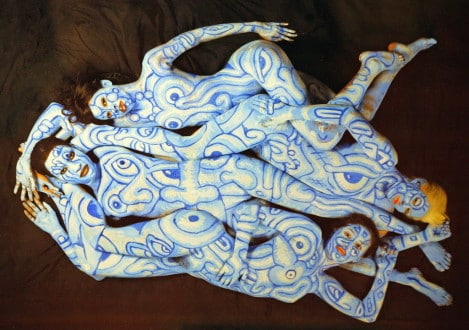Photography: Hanging in the Balance Between Science and Art

Is photography an art? This question has hung in the air since the Victorian era when photography was first developed; at an early meeting of the Photographic Society of London, for example, it is recorded that one of the members felt photography was far “too literal to compete with works of art” and therefore unable to “elevate the imagination”. Thus began the rather widespread perception of photography as little more than a mechanical recording medium.
It was not until the mid-20th century that this attitude began to change, and photography began to be seen more as a synergy of art and science, with both coming together and, aided by the imagination, producing spectacular and thought-provoking results.
Finding this “sweet spot”, this ideal middle ground where art and science combine, is no easy task—art and science differ widely, after all, in their aim and their practice, and often those who are “artistically minded” are believed to think quite differently than those who are analytically and scientifically minded.
To truly master the art of photography, one has to have the technical ability required to master a range of complex electronic equipment, to incorporate it all flawlessly to create perfect technique. However, one also must have that intangible quality we can only call “vision” and an artistic eye that guides placement and looks at common things from diverse new angles. Truly adept portrait photographers must also be able to convey something of the essence or “soul” of their subjects, rather than simply taking a technically perfect (or even overly flattering) photo.
Frequently, budding photographs display a talent for either the technical side or the artistic side of photography—seldom both at once—and have to spend a fair bit of time honing their weaker side in order to produce truly effective photographs. More often than not, people master the technical aspects of photography long before mastering the intangible qualities of vision and inspiration (if indeed they ever master these elusive qualities at all).
It is believed that attaining true vision as a photographer is even more difficult than it is when working with tactile artistic mediums (such as paint) because of the element of separation from the subject that a photographer must deal with—everything about the subject must come through a mechanical device (the camera). Tactile art tends to be much more “organic” in nature, allowing the artist move freely, interacting with the sitter while fluidly directing paint to create his or her vision, with opportunities to correct or incorporate errors along the way.
Photography, by contrast, must be much more precise and focused, with the photographer consciously compensating for the inherent quirks and shortcomings of the equipment, such as the fact that almost all lenses create some form of distortion, aberration, blurriness, chromatic aberration, unwanted vignette effect, and so on. These effects are often much less visible during the process of producing a photograph than errors in paint are visible during the process of creating a painting, so photographers must learn a knack for atoning for these things through experience and technical know-how.
Digital photography only introduced more quirks, with a higher tendency to produce noise, poor resolution, pixelation, colour casts, and colour shifts. Additionally, they process light differently (and often less optimally) than old film cameras, and struggle with areas of dense visual information, such as forests full of mingling tree-branches.
A lack of knowledge about image resolution can lead to a photographer being stuck with images that look terrible in print while looking fine on the camera or on the web—something a painter never has to even think about, as paint goes on canvas of whatever size the painter chooses without further thought or adaptation needed.
Likewise, paint goes on boldly and directly in whatever colours have been chosen, whereas all different camera sensors (digital or film) have a specific contrast range and colour gamut, which must correctly align with the brightness range of the scene in order to produce vivid colours and proper shadows and highlights. Photographers must use a light meter, learn the correct way of interpreting histograms, and understand colour balance before they can create photos of the right colour range reliably.
When creating a print of any given photograph, one also has to contend with the fact that printers, too, have all their own individual quirks and specifications, including their own colour gamuts and contrast ranges. Poor quality print jobs will ruin any photograph, with banding, bland shadows, “off” colourization, and all manner of other potential ills. As compared to dealing with a painting, where colours change only slightly during the drying process, this is all obviously a great deal more complex.
The real question of producing truly artistic photographs is how on earth does one contend with mastering all of these technical, mechanical processes without forgetting to be inspired, spontaneous, and artistic? How does one not get so mired in creating technical perfection one forgets to simply create?
As in so many things, the answer lies in practice, practice, practice—rather like a musician must first master the technical aspect of playing an instrument, then it becomes as natural as breathing, the photographer must master the technical aspects of photography before it becomes as natural as simply creating, as with brush applied to paper. Once a photographer arrives at this hallowed place of mastery, he or she can simply listen to emotion, intuition, and follow his or her bliss to create the perfect photographs.
Image Credit: https://www.flickr.com/photos/72213316@N00/5612760953